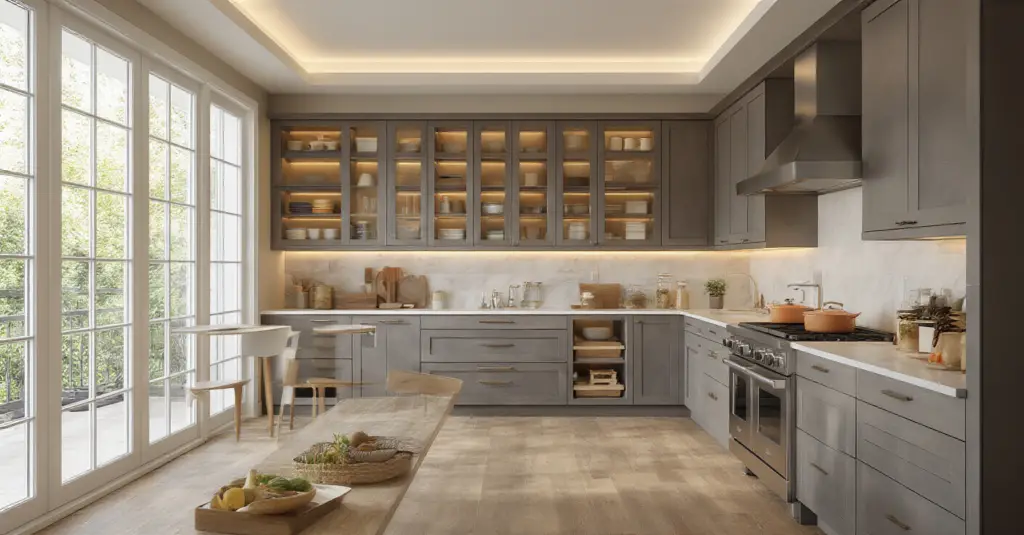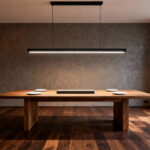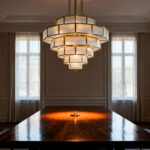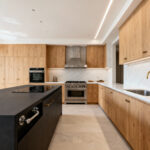You know the question people always ask me about contemporary kitchen cabinets? It’s not about which shade of gray is “in” this year. It’s about whether they’ll still love them in 10 years, or—and this is the important part—if the kitchen will still work for them in 20. Will it work when they have toddlers running around? When their parents move in? When their own hands get a little stiffer?
That’s where everyone gets it wrong. They see these sleek, minimalist kitchens and think it’s just a look. It’s not. Good contemporary design is about creating a space that’s incredibly functional, easy to use, and adaptable for every stage of life. It’s universal design in its most beautiful form. So let me break it down for you, no corporate fluff, just the stuff that actually matters for creating a kitchen that will serve you and your family for the long haul.
Strategic Planning for Your Contemporary Cabinet Layout (Part 1)
This is the phase where you save yourself from future headaches. Seriously. Getting the layout right isn’t about just stuffing cabinets wherever they fit; it’s about mapping out a space that feels intuitive and effortless, no matter who is using it.
1. Assess Your kitchen workflow for Optimal Cabinet Placement
Forget the old “kitchen triangle” for a second. Think about your actual movements. Where do you chop veggies? Where do you need to set down a hot pan? A well-planned kitchen means fewer steps, less bending, and less reaching. This isn’t about being lazy; it’s about being smart. For someone with mobility challenges, a caregiver with their hands full, or a parent trying to cook while holding a baby, eliminating those extra steps is a game-changer.

My advice is to “ghost cook” a meal. Literally, walk through the motions of making your favorite dinner. Where do you find yourself bumping into things? What do you wish was closer? Place your most-used items—spices, oils, everyday dishes—in the most accessible spots between waist and shoulder height. That’s the core of a kitchen that works for people, not the other way around.
Now that you’ve mapped out the flow, we need to talk about the feeling you want the space to have.
2. Define Your Desired Contemporary Aesthetic: Minimalism vs. Warm Modern
People hear “minimalist” and think of a cold, sterile white box. That’s a total misconception. Minimalism is about clean lines and lack of clutter, which is inherently calming and easier to maintain. You can achieve this with warm woods, soft textures, and thoughtful lighting to make it feel incredibly inviting. This “warm modern” approach is what I recommend for most families because it’s both sophisticated and deeply comfortable.

Your job here is to create a mood board, but be ruthless. Don’t just pin every kitchen you like. Ask yourself: “Does this look easy to clean? Does it look like a place I could relax in after a long day?” Think about a flat-panel walnut cabinet next to a soft matte gray one. Both are contemporary, but they create completely different feelings. Pick the feeling you want to live with every single day.
Once you have your vision, you absolutely cannot skip this next, incredibly boring but critical step.
3. Measure Precisely: Ensuring Cabinet Fit and Efficient Space Utilization
I once had a client try to save a few bucks by doing their own measurements for a high-end kitchen. The result? A half-inch gap between the pantry and the wall that drove them insane and was impossible to fix cleanly. That tiny error made their super-expensive kitchen look cheap. Frameless contemporary cabinets demand perfection. There’s no face frame to hide your mistakes.
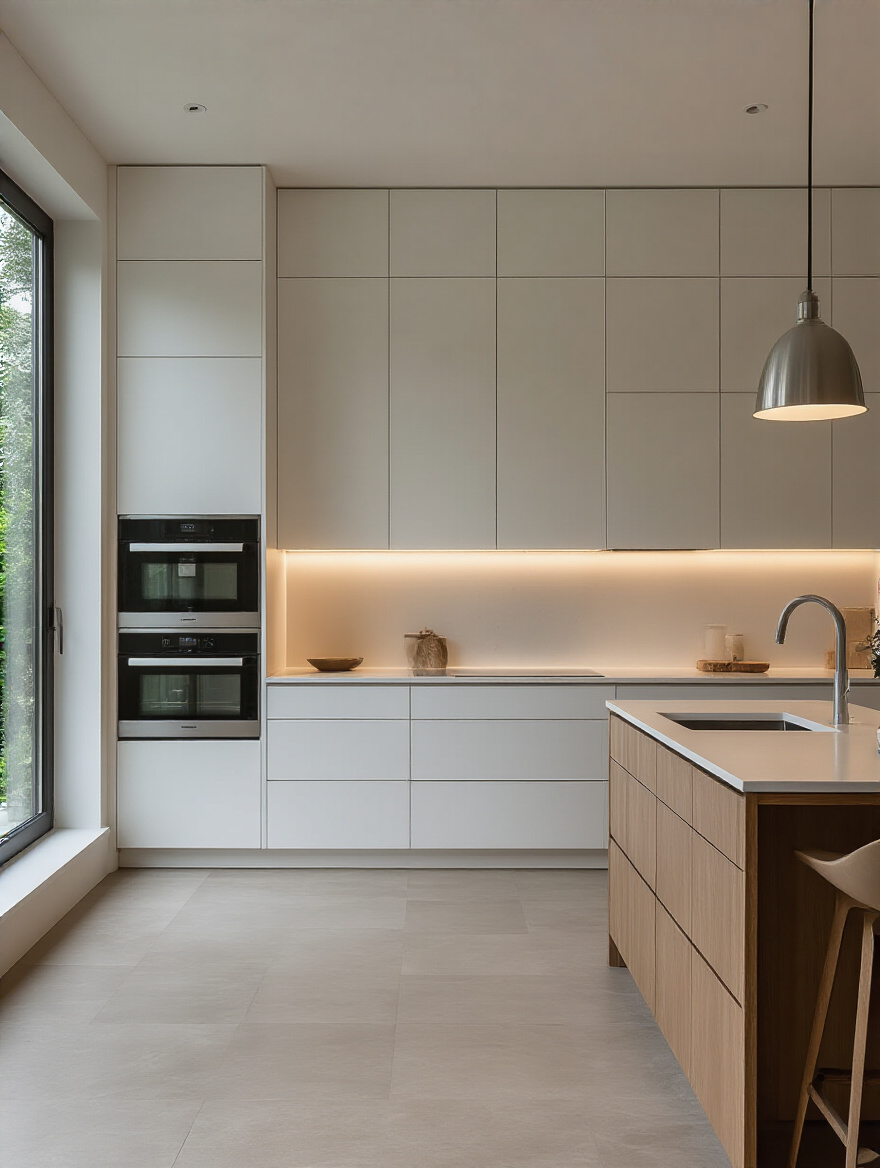
Measure everything three times: once at the top, once in the middle, and once at the bottom. Walls are never perfectly straight, and floors are never perfectly level, especially in older homes. Note every outlet, switch, and plumbing line. This isn’t just about making the cabinets fit; it’s about making them look truly built-in and intentional, creating that seamless effect that defines modern design.
With your perfect measurements in hand, it’s time to face the numbers.
4. Budget Allocation for Cabinetry: Understanding Cost vs. Value
Here’s a hard truth: the cheapest option is almost never the best value. That particleboard cabinet box might save you money upfront, but the first time it gets a little steamy from the dishwasher or has a minor leak under the sink, it’s going to swell up like a sponge and fall apart. Plywood construction is where your money should go. It’s more durable, holds screws better, and can withstand the realities of life.
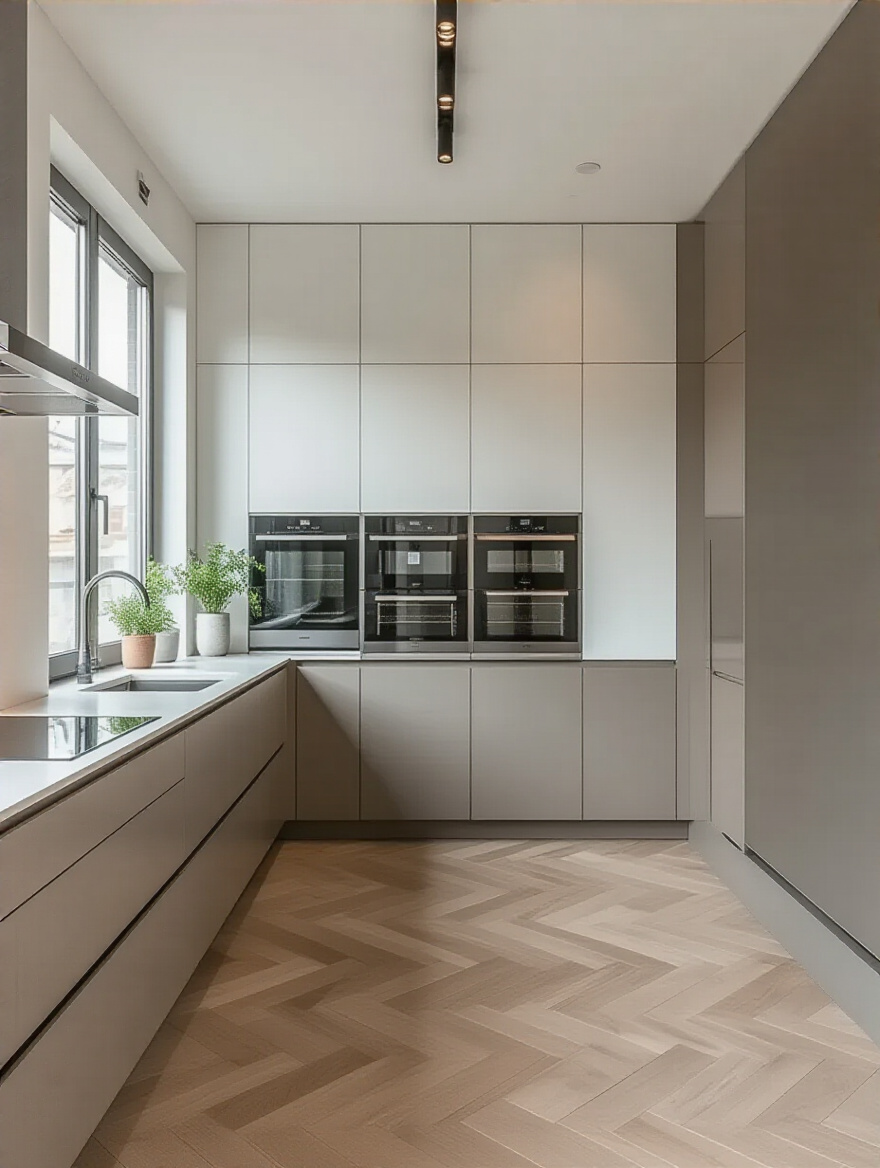
Think about hardware, too. Don’t cheap out. Quality soft-close hinges and full-extension drawer glides aren’t a luxury; they’re essential. They prevent slamming that can wake a baby (or annoy you), and full-extension glides mean you can actually see and reach what’s at the back of the drawer without digging. It’s a small detail that dramatically improves daily function and is a must for anyone with limited reach or mobility.
Strategic Planning for Your Contemporary Cabinet Layout (Part 2)
Okay, now for the really clever part. This is where we go beyond just placing boxes on a wall and start designing a kitchen that actively makes your life easier.
5. Integrate Smart Storage Solutions During Initial Design Phase
Don’t wait to figure out storage until after the cabinets are in. Building it in from the start is the secret to a perpetually clean kitchen. I’m talking about deep drawers for pots instead of lower cabinets you have to get on your knees to access. Think about a pull-out pantry where everything comes to you, instead of a deep cabinet where things go to die in the back.
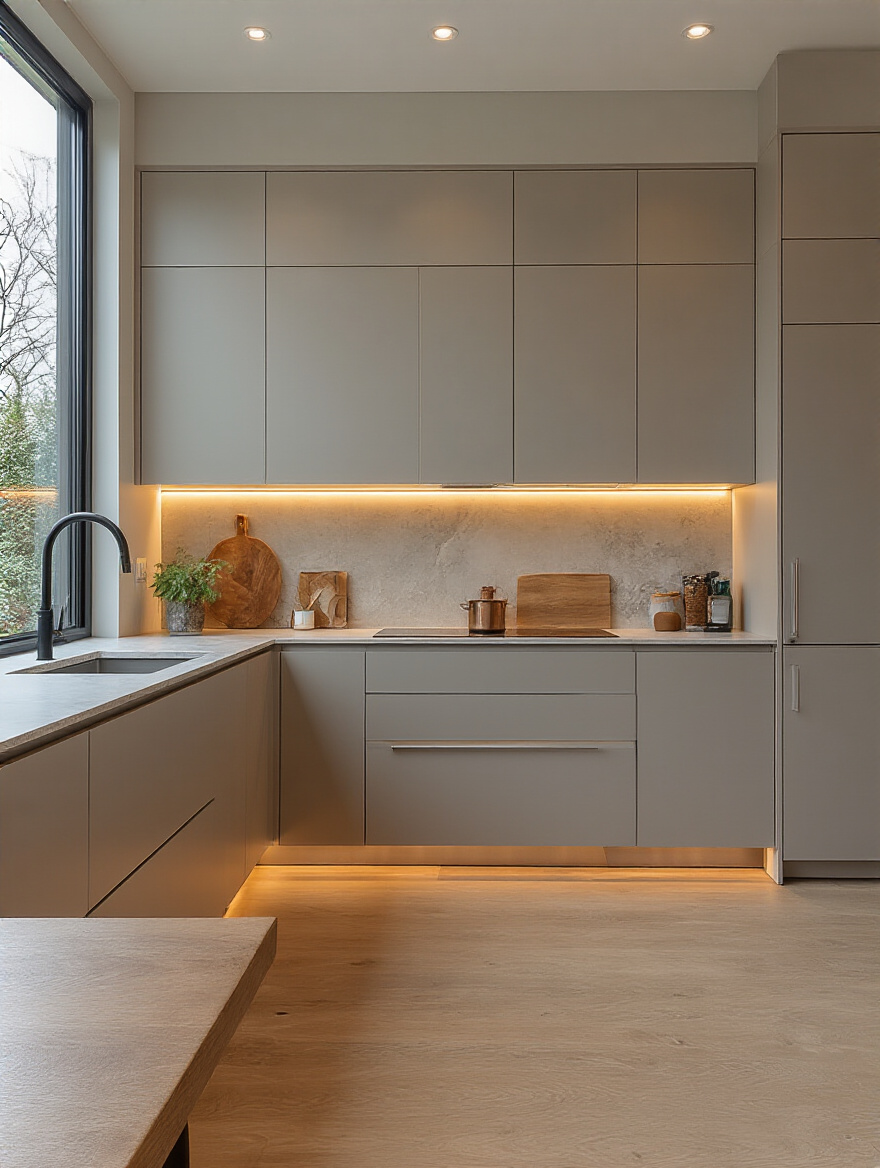
For one of my clients who was planning to have her elderly mother move in, we designed the entire kitchen around eliminating bending and reaching. We used appliance garages to hide the toaster and coffee maker, keeping counters clear. We put heavy dishes and pots in large, deep drawers with strong glides. The result was a kitchen that was not only beautiful but also safe and accessible for every member of her multigenerational family.
That forward-thinking approach is also crucial when it comes to technology.
6. Consider Future Technology Integration: Hidden Outlets & Charging Stations
Clutter is the enemy of contemporary design, and cord clutter is the absolute worst. Plan for technology from day one. You can install power strips on the underside of your upper cabinets, completely hidden from view but perfectly placed for plugging in a blender or mixer. This keeps your beautiful backsplash clean and uninterrupted.
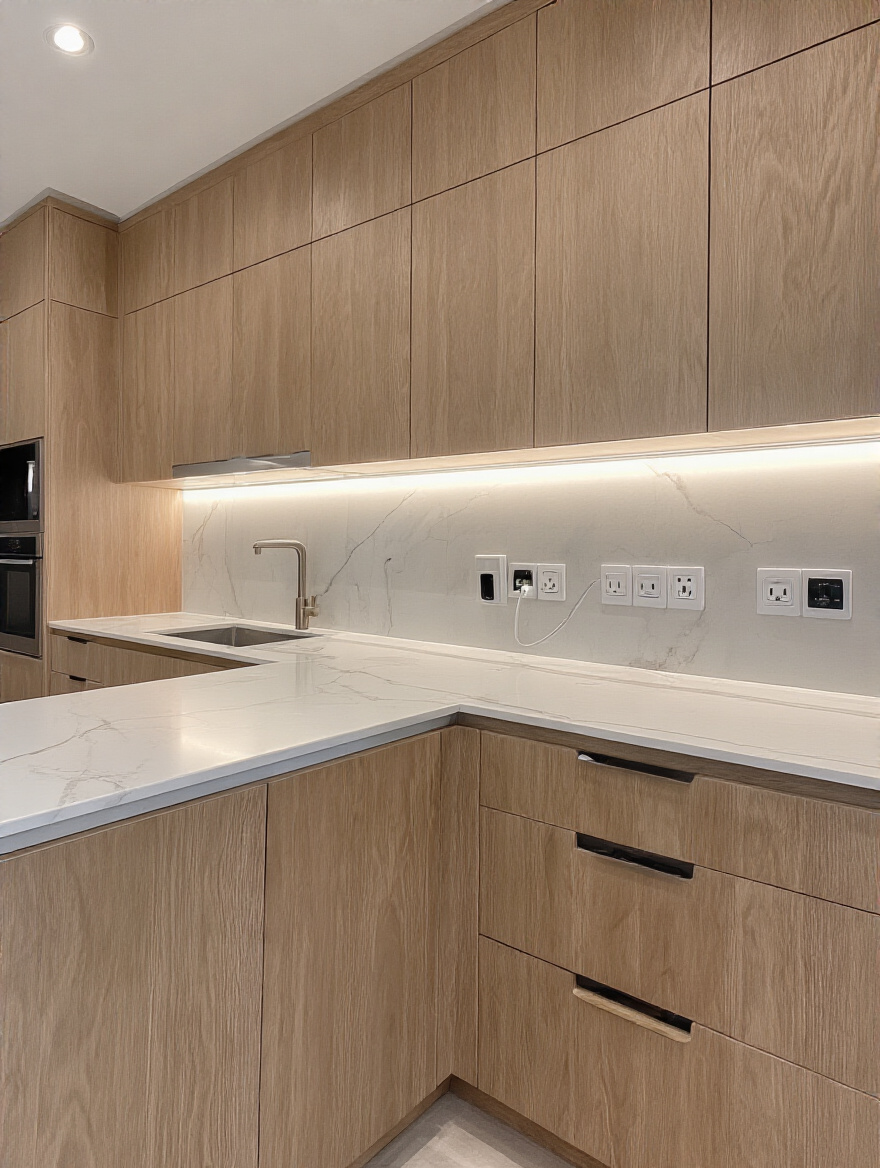
My favorite trick is designing a dedicated “charging drawer.” It’s just a standard drawer outfitted with USB and standard outlets inside. It’s the perfect place to hide the tangle of phones, tablets, and watches charging overnight. It keeps your countertops free and your devices safe from spills. This isn’t just about looking neat; it’s about creating a calm, organized hub for your home.
Selecting Finishes and Features for a Modern Look (Part 1)
This is the fun part where we make everything look amazing. But remember, in good design, beauty and function are two sides of the same coin. Your choices here should be both stylish and incredibly practical.
7. Choose Sleek Cabinet Door Styles: Flat-Panel (Slab) Dominance
There’s a reason flat-panel (or slab) doors are the king of contemporary kitchens. They are, without a doubt, the easiest cabinet doors to clean. No grooves, no bevels, no nooks for grease and dust to hide in. A quick wipe-down and you’re done. For busy parents, pet owners, or anyone who’d rather be doing literally anything else than scrubbing tiny details on a cabinet door, this is a massive win.
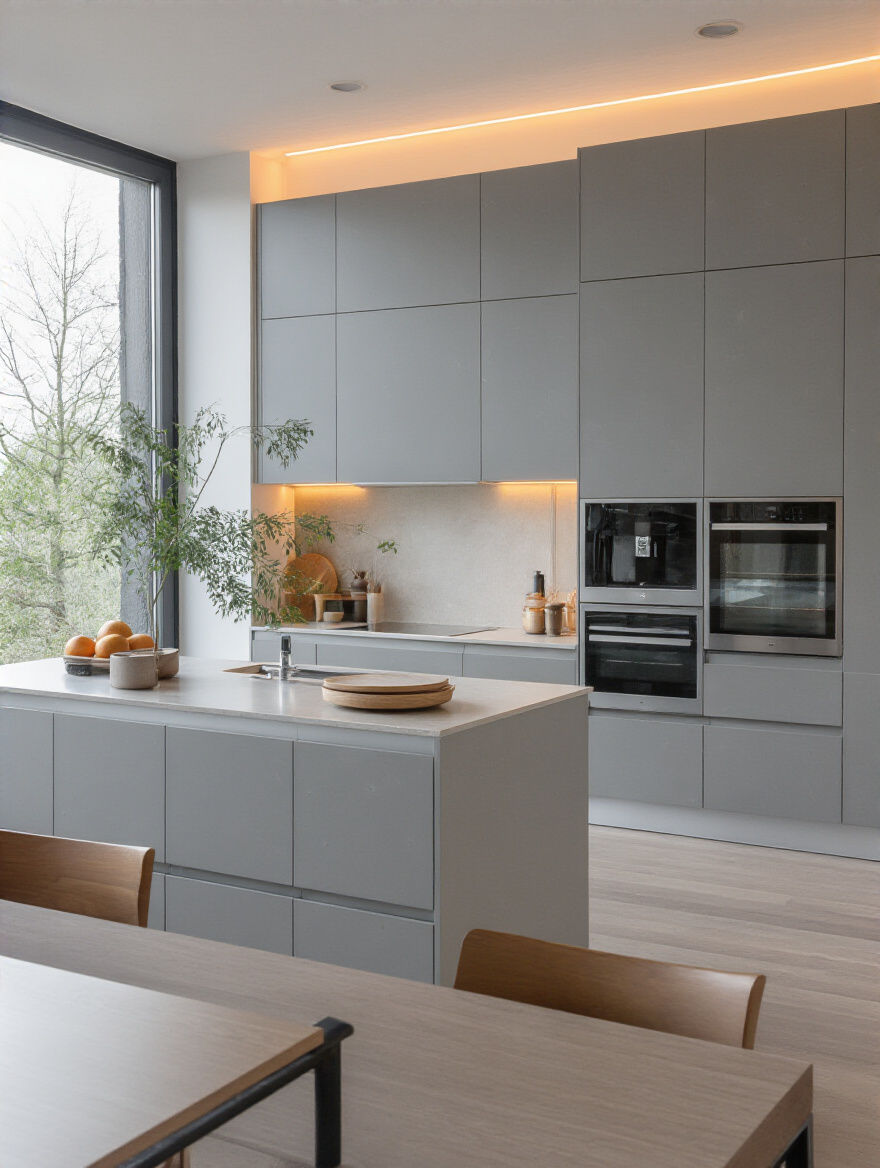
A smooth, unbroken surface also makes a space feel larger and less chaotic. The lack of visual noise is calming. Whether you choose a high-gloss finish to reflect light or a super-matte finish to absorb it, the simple form of the slab door is the perfect canvas for a modern, functional kitchen. It’s a style that’s truly timeless because of its simplicity.
To really elevate that simplicity, you have to think about how you’ll open them.
8. Embrace Handle-less Designs for an Uninterrupted Contemporary Aesthetic
This is probably my biggest pet peeve: when people design a gorgeous, sleek kitchen and then stick bulky, traditional handles on it. It’s like wearing hiking boots with a cocktail dress. But more importantly, going handle-less is a huge win for universal design. There are no knobs or pulls to catch on your clothes, bump your hip on, or for a toddler to run into.
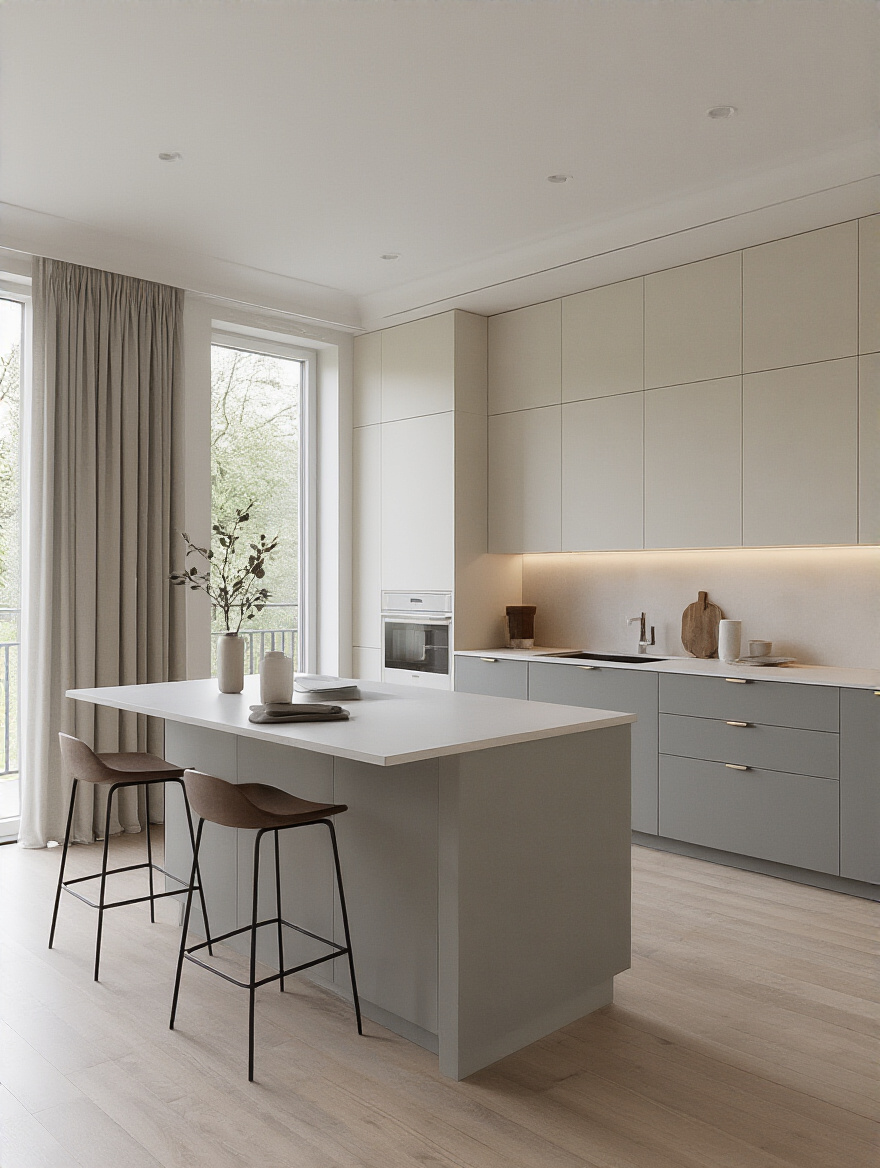
You have a few options here. Push-to-open mechanisms are fantastic for a completely seamless look. Or you can use an integrated channel or “J-pull” that’s routed directly into the top or side of the door. Both are easy to open with an elbow or a hip when your hands are full. For people with arthritis or limited grip strength, not having to pinch or pull a small knob is a relief. It’s simply a more user-friendly design for everyone.
This philosophy of clean and functional extends to the materials you choose.
9. Explore Material Innovations: Textured Melamine, Laminates, and High-Gloss Finishes
Don’t let anyone tell you that you need solid wood for a quality kitchen. Modern engineered materials are incredible. Textured melamines can give you the convincing look and feel of real wood without the cost or maintenance. High-quality laminates are insanely durable and come in a million colors and finishes. They resist scratches and stains far better than most painted wood surfaces.
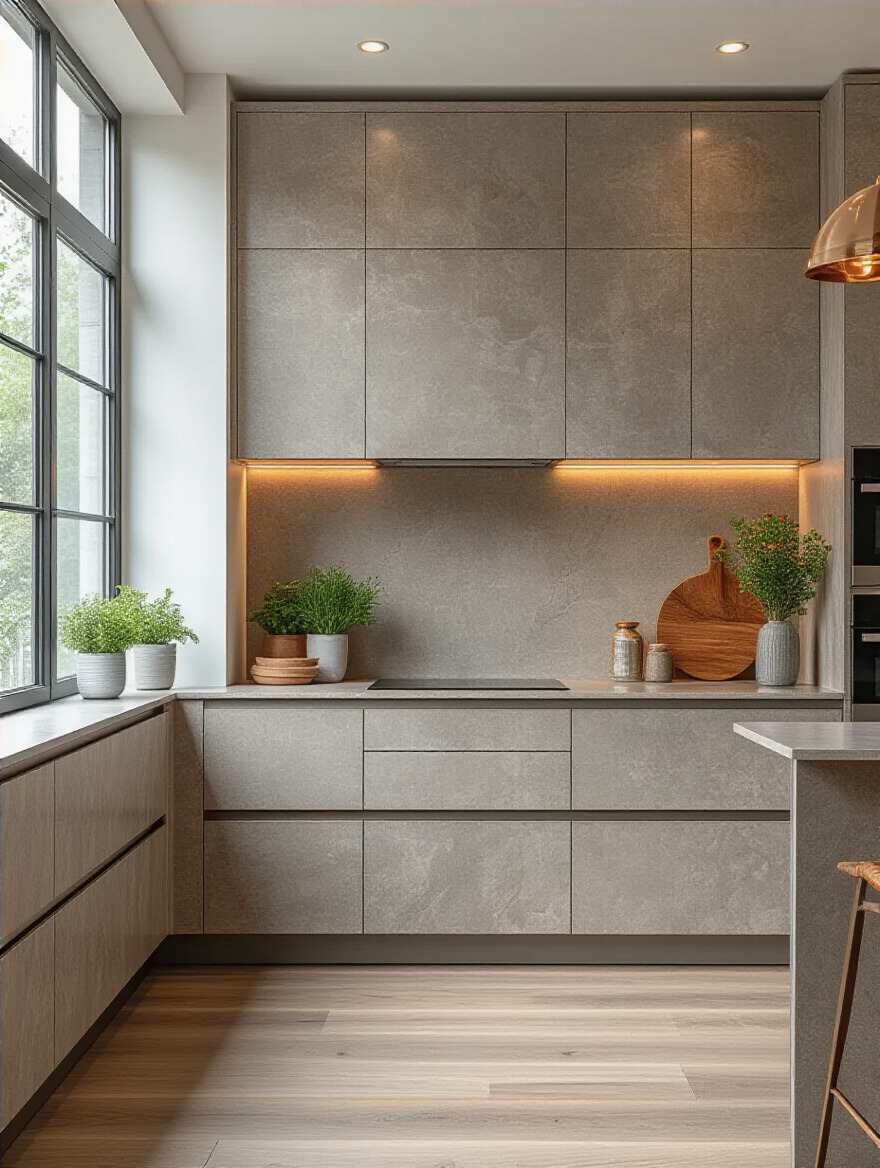
For a client with young kids, we used a fingerprint-resistant matte laminate that looked incredibly chic but could withstand sticky hands and daily wipe-downs without showing every single smudge. The high-gloss look is great for bouncing light around a small space, but make sure you get a quality acrylic finish, which is more durable than a simple lacquer. These materials aren’t a compromise; they’re an upgrade in performance.
Just don’t feel like you have to stick to only one material.
10. Incorporate Contrasting Colors or Materials for Visual Interest
A kitchen that’s all one color can feel a bit flat. Introducing a second color or material is a great way to add depth and personality. The classic move is to make the island a different color—like dark gray perimeter cabinets with a warm oak island. This not only creates a beautiful focal point but also helps to define the different zones of your kitchen.
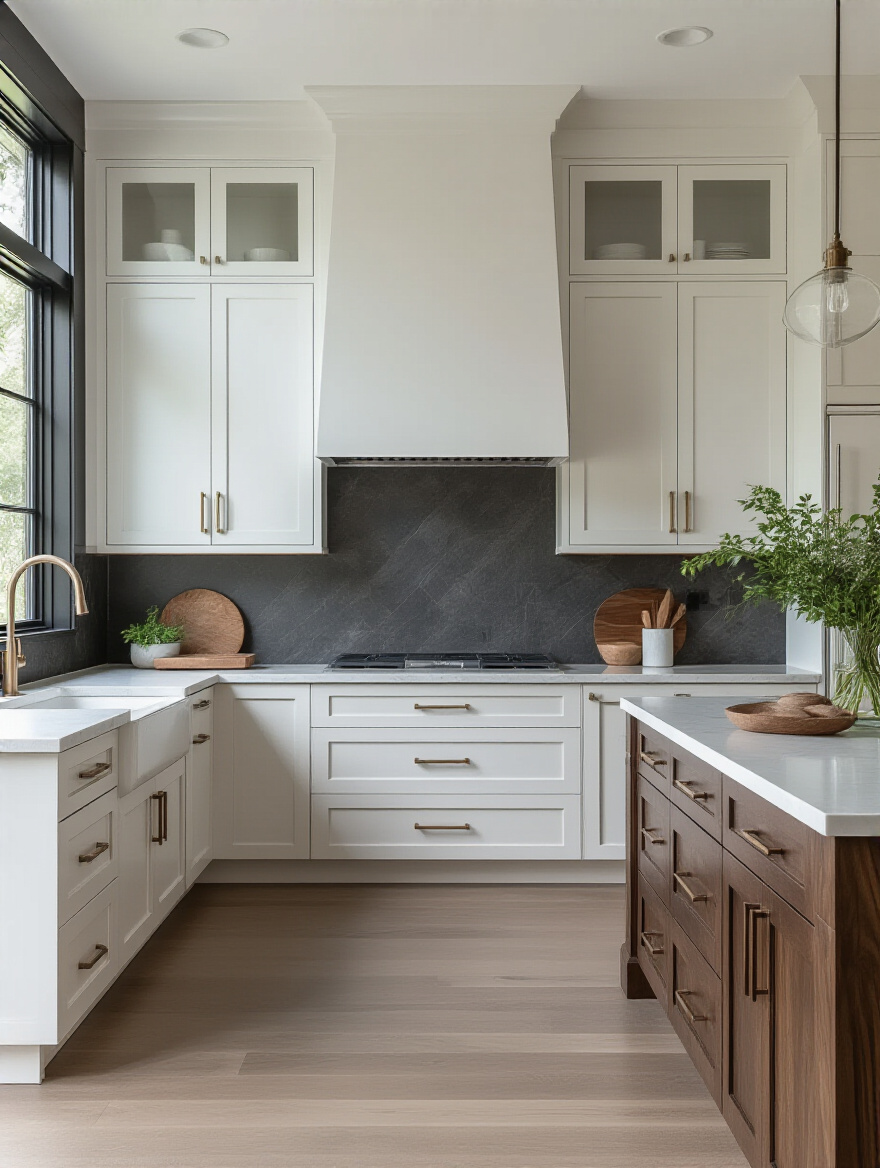
From an accessibility standpoint, this can be really helpful. Using a darker color for the base cabinets and a lighter one for the uppers can provide visual contrast that helps people with low vision navigate the space more easily. You’re creating visual landmarks. Just don’t go crazy—stick to two, maybe three, complementary finishes at most to maintain that calm, uncluttered feel.
Selecting Finishes and Features for a Modern Look (Part 2)
We’ve covered the outside of the cabinets, but what’s going on inside is just as important for creating a kitchen that’s a dream to use. Let’s get everything organized and bring in the light.
11. Optimize Drawer and Pantry Inserts for Maximum Efficiency and Organization
The single best thing you can do for your kitchen’s functionality is to design the inside of your cabinets and drawers as thoughtfully as the outside. This means drawer dividers for utensils, plates, and bowls. It means pull-out shelves for your pantry. It means vertical dividers for baking sheets so they’re not crashing down on you every time you open the cabinet.
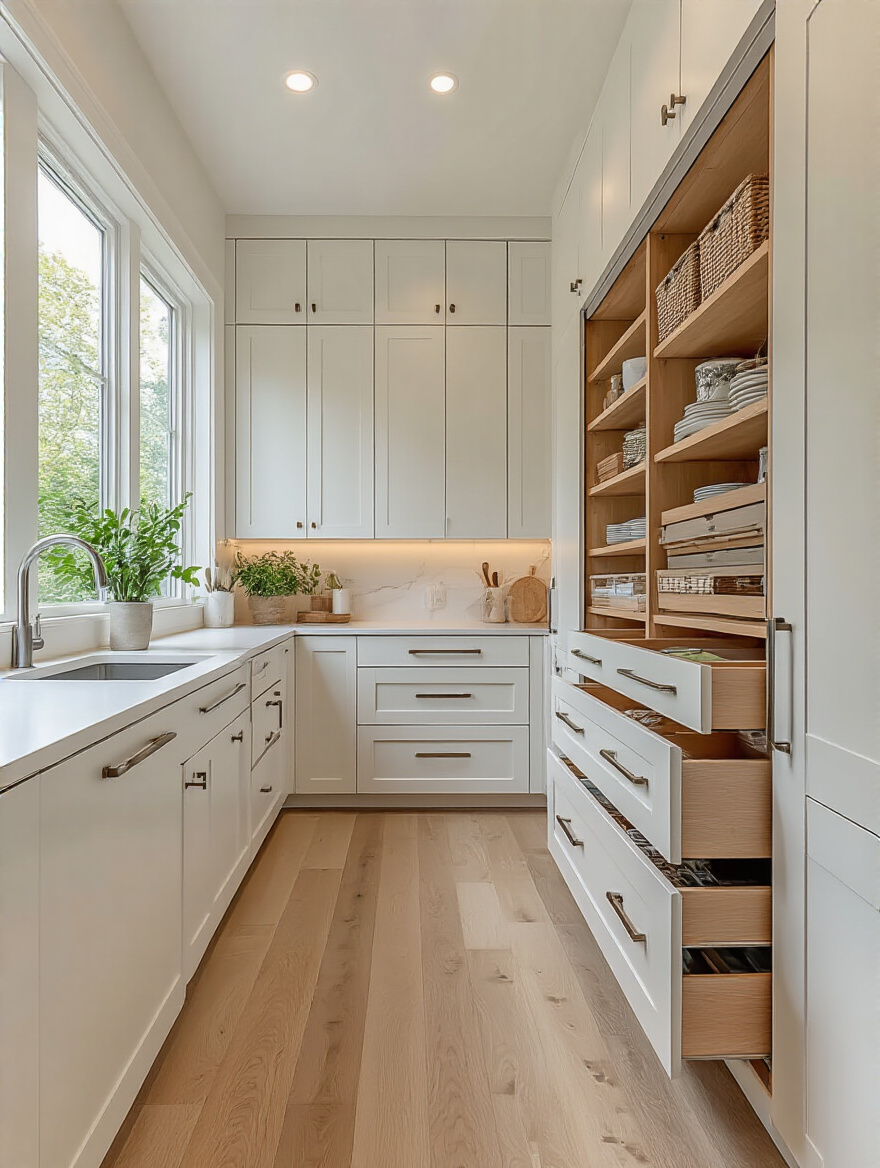
“A kitchen isn’t truly functional until everything has a home. Good organization isn’t about being tidy; it’s about making your life easier, reducing stress, and eliminating the physical strain of digging for what you need.”
My rule of thumb is this: if you have to move more than one thing to get to what you need, your storage isn’t working hard enough. Customizable inserts are an investment in your sanity. And for long-term accessibility, they mean less bending, less rummaging, and more independence in the kitchen.
Now, let’s make sure you can actually see all that beautiful organization.
12. Select Under-Cabinet and In-Cabinet Lighting for Ambiance and Function
This is non-negotiable. Under-cabinet lighting is the most important light source in your kitchen. Your ceiling lights cast a shadow on the counter right where you’re working. Task lighting directly under the cabinets illuminates your workspace, making chopping and prep work safer and easier on the eyes. This is a huge safety feature, especially for older adults or anyone with vision impairment.
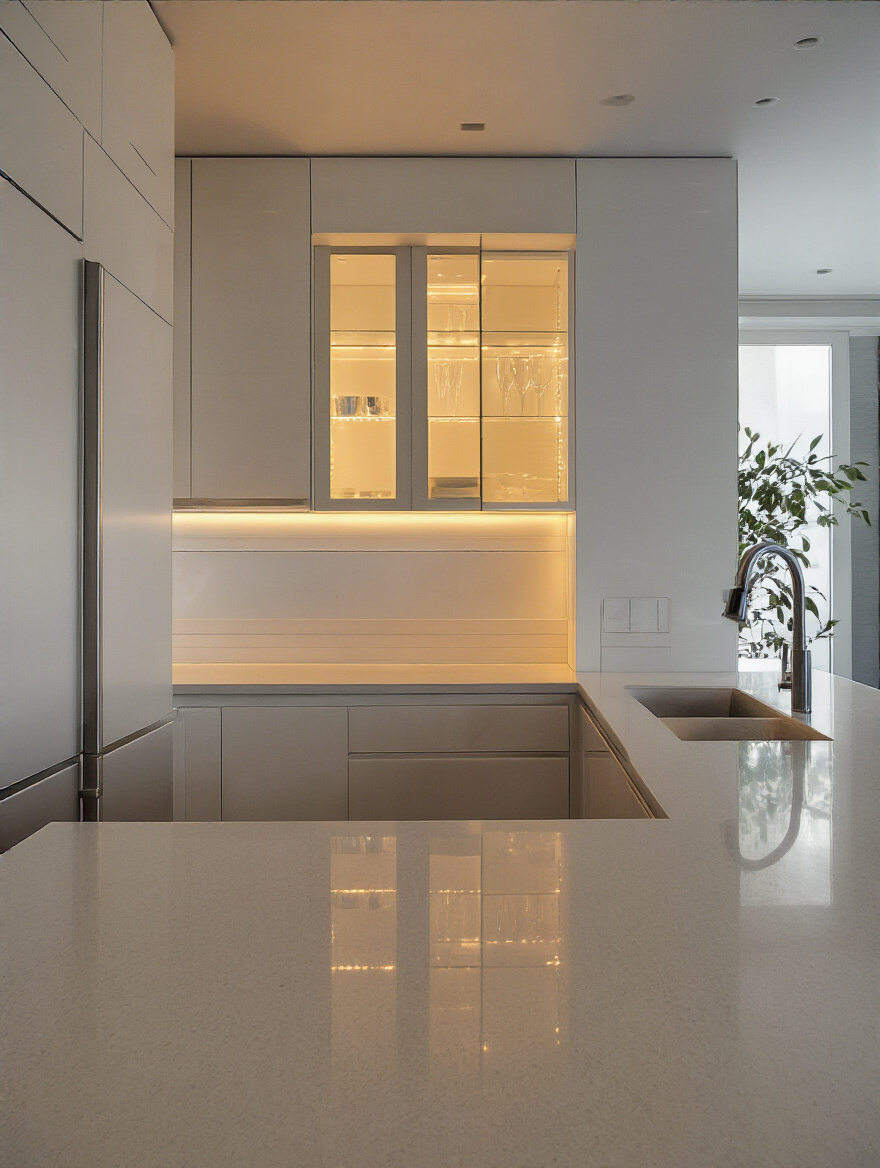
I also love putting lights inside drawers and cabinets that turn on automatically when you open them. It feels incredibly luxurious, but it’s also practical. You can immediately see everything, even what’s hiding in the back corners. Choose a warm LED light (around 3000K) for a welcoming glow that’s bright enough for tasks but not harsh or clinical.
Flawless Installation and Aesthetic Integration (Part 1)
You can pick all the right things, but if they aren’t put together perfectly, the whole project falls apart. The details of the installation are what separate an okay kitchen from a stunning one.
13. Ensure Professional Installation for Optimal Alignment and Durability
Please, please do not try to install frameless contemporary cabinets yourself unless you are a professional. The tolerances are tiny. The goal is perfectly even, minimal gaps between every door and drawer front. A professional installer has the tools (like laser levels) and the experience to get this exactly right. It’s the difference between a high-end look and a mess.
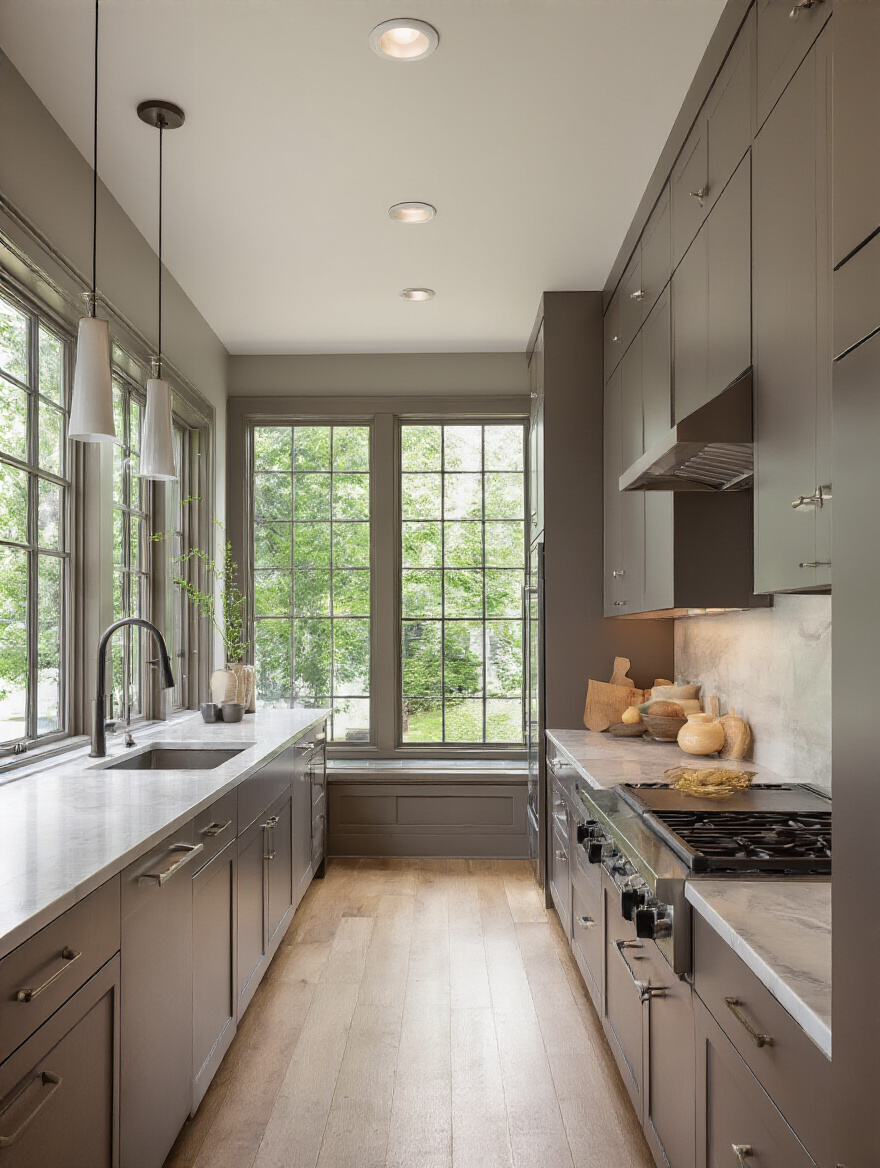
A pro also ensures everything is properly secured to the wall and perfectly level, which is critical for long-term durability. A slightly sagging cabinet puts stress on the hinges and the box itself, leading to problems down the road. This is one part of the budget where you should absolutely not cut corners. The quality of the installation directly impacts how long your beautiful new kitchen will last.
This attention to detail extends to how the cabinets meet the countertop.
14. Coordinate Cabinetry with Countertop Materials for Visual Harmony
Think of your cabinets and countertops as a single, unified element. A busy, heavily veined countertop paired with a strongly grained wood cabinet can look chaotic. The goal is balance. If you have a showstopper countertop, let the cabinets be a quiet, solid-colored backdrop. If your cabinets have beautiful texture or wood grain, choose a calmer, more uniform countertop material.
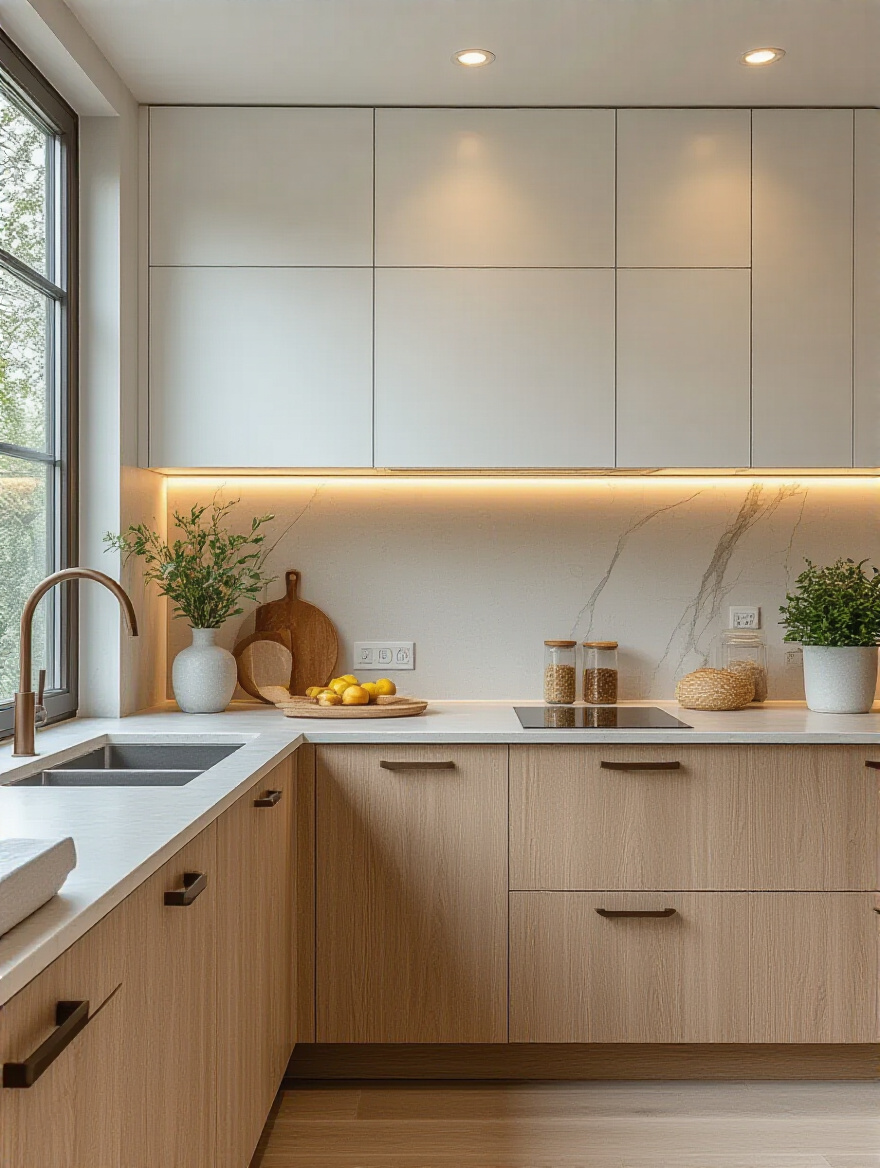
Always, always get large samples of both materials and look at them together in your actual kitchen light. What looks perfect in a showroom can look completely different under the lighting in your home. Pro tip: a “waterfall” edge, where the countertop material continues down the side of the island to the floor, is a hallmark of contemporary design that creates a beautiful, seamless look.
That seamless philosophy also applies to the hardware—or lack thereof.
15. Select Minimalist Hardware (if any) to Complement Clean Lines
We touched on this before, but it’s worth repeating: less is more. If you must have hardware, choose something incredibly simple and linear. A slim, matte black or brushed nickel bar pull can look beautiful without disrupting the clean lines of the cabinets. Mount it horizontally on drawers and vertically on doors for a consistent, geometric look.
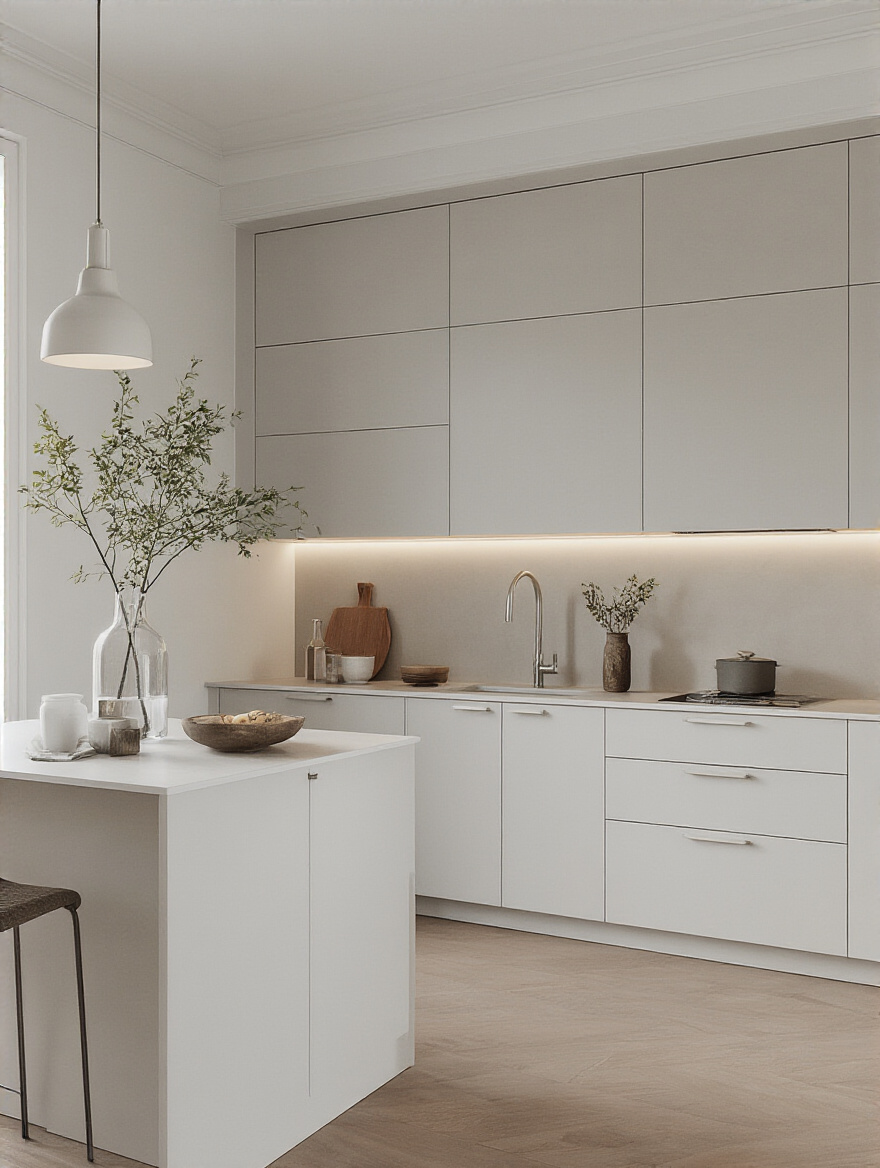
Remember, the goal is for the hardware to complement the cabinetry, not to be the star of the show. Finger pulls, which are mounted on the top or bottom edge of the door, are another great option. They are discreet and easy to use, providing a good grip without protruding into the space. It’s all about maintaining that smooth, uninterrupted visual flow.
Of course, sometimes you want to intentionally interrupt that flow, but you have to do it strategically.
16. Utilize Open Shelving Strategically to Showcase Decorative Elements
Open shelving can be beautiful, but it can also become a magnet for clutter. My advice is to use it sparingly and with purpose. Use it to display a few beautiful objects—a collection of pottery, some cookbooks, a piece of art—not your mismatched coffee mugs. It’s a great way to break up a long wall of solid cabinet doors and add a personal touch.

From a practical standpoint, if you do use open shelves for everyday items, make sure they are within easy reach. The lowest shelf is a perfect spot for everyday glasses or bowls, making them easily accessible for everyone, including kids or someone using a wheelchair. Just be honest with yourself about your tolerance for dusting and keeping things tidy before you commit to too much open shelving.
Flawless Installation and Aesthetic Integration (Part 2)
We’re in the home stretch. These final integration details are what create that truly polished, high-end feel, making your kitchen look like it was designed with a single, clear vision.
17. Blend Cabinets with Appliance Paneling for a Uniform Look
If it’s in your budget, panel-ready appliances are the ultimate expression of seamless contemporary design. A refrigerator and dishwasher that are hidden behind custom cabinet fronts simply disappear, creating an unbroken wall of beautiful cabinetry. It’s a technique that makes the kitchen feel less like a utility space and more like a refined piece of furniture.
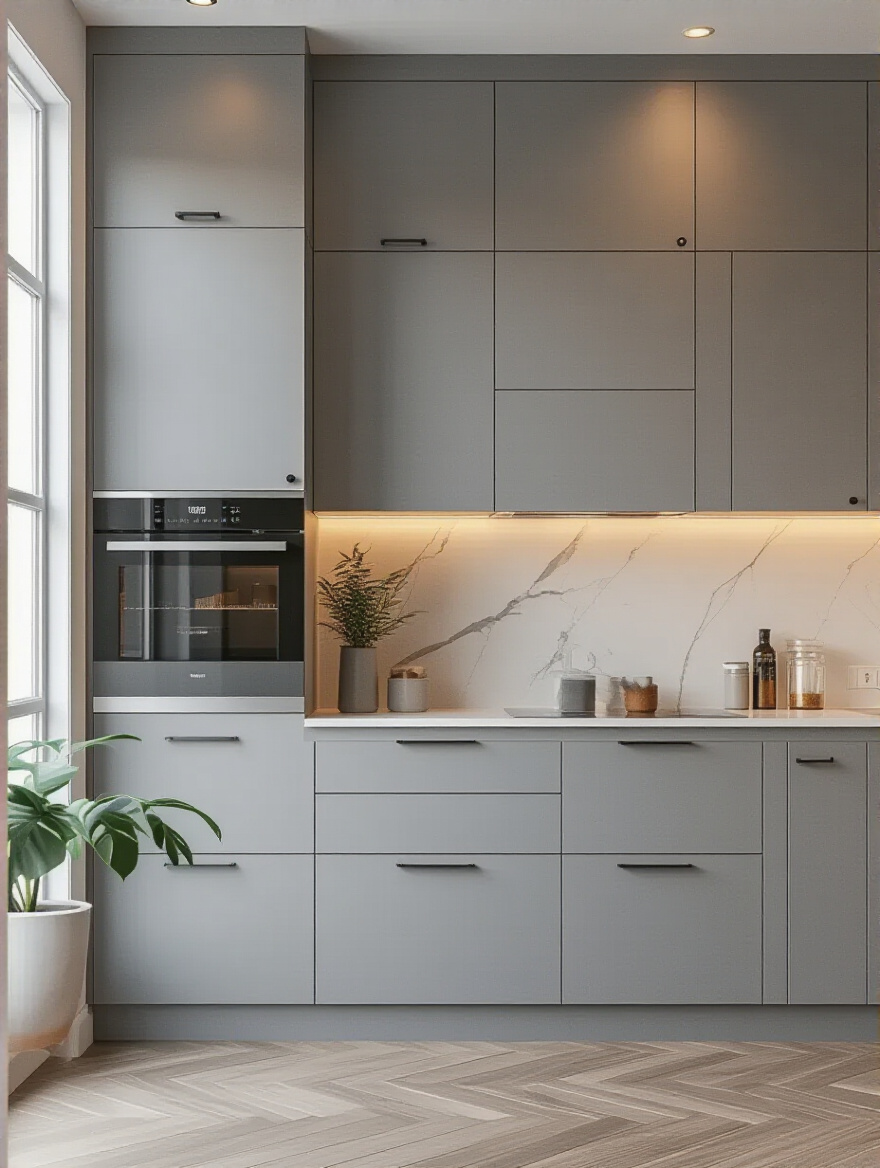
This is especially effective in open-concept spaces where the kitchen is visible from the living area. It helps the whole area feel more cohesive and less “kitchen-y.” This isn’t just about looks; a fully integrated dishwasher, for instance, is often quieter. And eliminating the visual clutter of big metal appliances creates a profound sense of calm in the space.
The backsplash is another key piece of this integration puzzle.
18. Integrate Backsplash Designs That Enhance, Not Overwhelm, Cabinetry
The job of the backsplash is to support the cabinets, not compete with them. Avoid busy, complicated mosaic tiles. Instead, think about materials that continue the theme of clean lines and simple forms. A back-painted sheet of glass is ultra-modern and ridiculously easy to clean. large-format porcelain tiles mean fewer grout lines, which again, means less scrubbing.
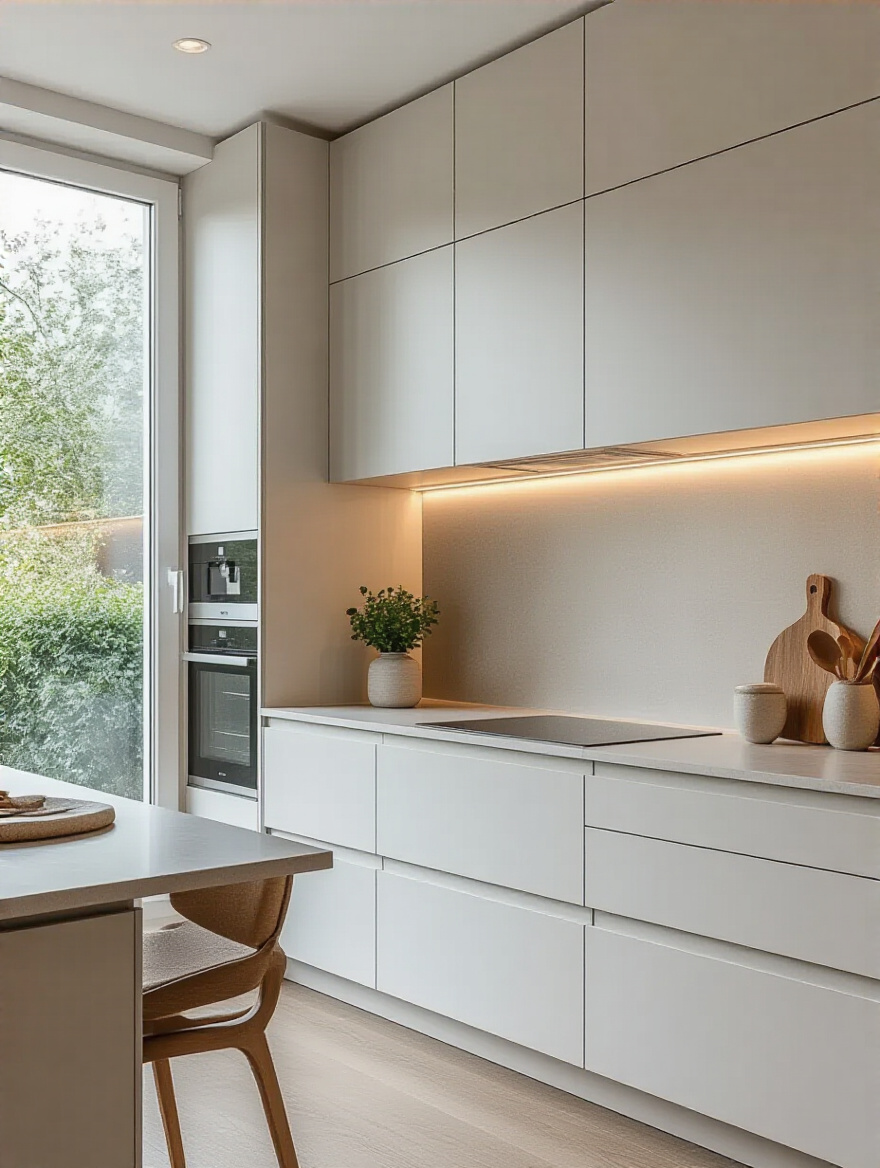
My favorite technique right now is to use the same slab material from the countertops for the backsplash. Running that quartz or porcelain slab all the way up the wall creates an incredibly dramatic, seamless, and luxurious look. It’s a bold statement that feels perfectly at home in a minimalist design, and the absence of grout makes it wonderfully low-maintenance.
Sustaining Style: Care and Long-Term Cabinet Optimization
You’ve built your perfect kitchen. Now you have to keep it looking and working perfectly. A little bit of consistent attention will protect your investment and keep you loving your space for years to come.
19. Implement Regular Cleaning Routines for High-Gloss and Matte Finishes
The beauty of contemporary finishes is that they’re designed for easy care. Forget harsh chemicals. For both high-gloss and matte cabinets, a soft microfiber cloth dampened with a little water and maybe a drop of mild dish soap is all you need. The trick for high-gloss is to immediately buff it dry with a separate dry cloth to prevent streaks.
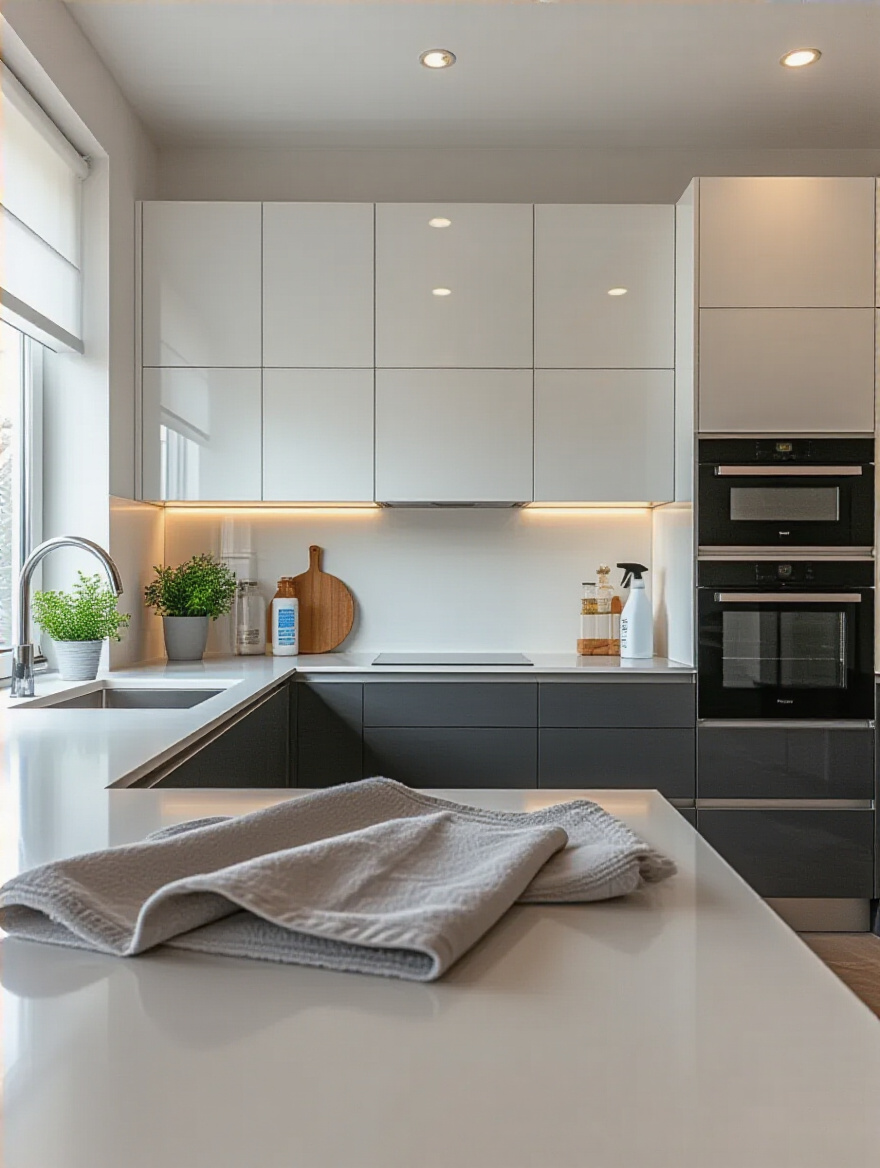
For stubborn spots on a matte finish, a magic eraser can work wonders, but always test it in an inconspicuous spot first. The key is gentle, regular wiping. By preventing grease and grime from building up, you’ll never have to do a major deep scrub, which is what ultimately damages cabinet finishes over time.
Of course, life happens, and sometimes a wipe-down isn’t enough.
20. Address Scratches and Dings Promptly to Preserve Cabinet Appearance
Don’t let a small chip become a big problem. The finish on your cabinets is a protective layer. Once it’s breached, moisture and dirt can get in and cause the underlying material to warp or delaminate. Most cabinet manufacturers sell touch-up kits that perfectly match your finish. Keep one on hand and fix any dings as soon as you see them.
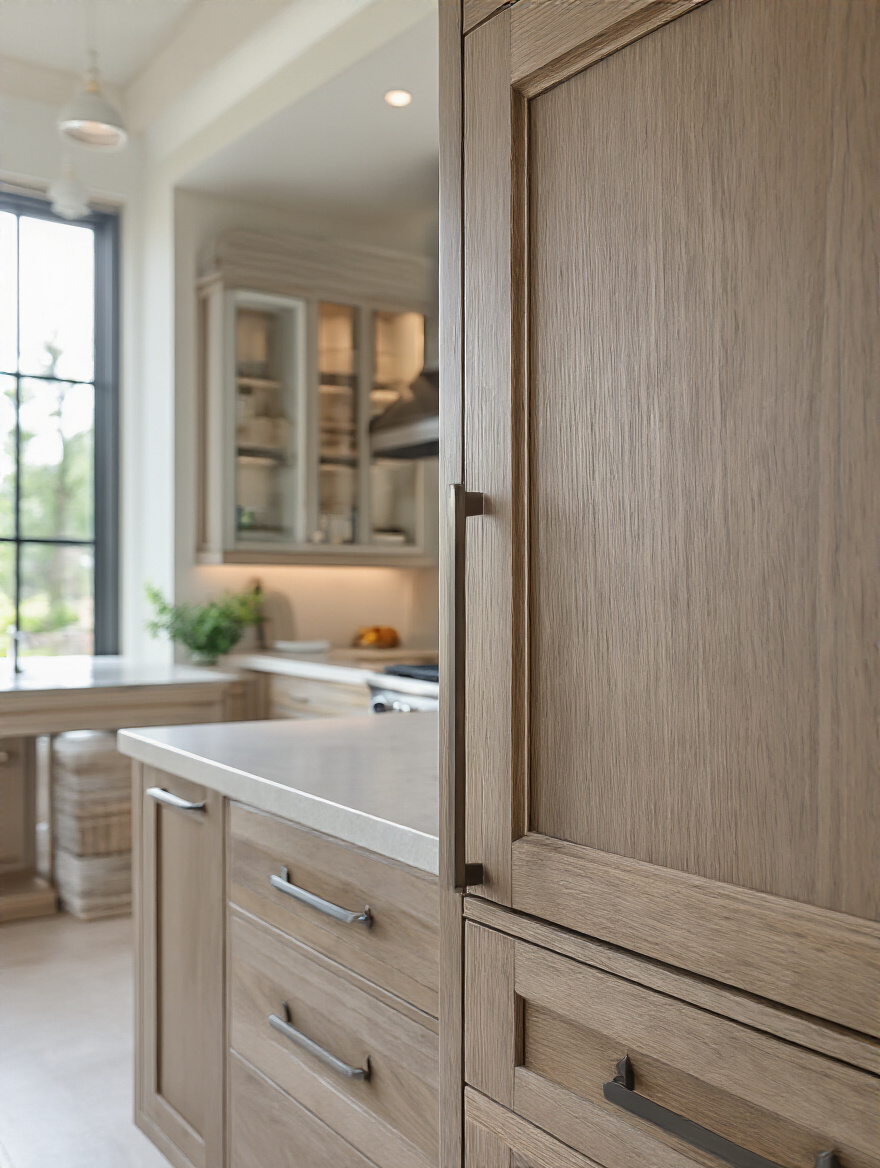
It takes five minutes, but that tiny repair can save you from having to replace an entire door front down the road. This isn’t about being precious with your kitchen; it’s about being practical. Just like fixing a chip in your windshield, a quick fix now prevents a major expense later.
As your life changes, your storage needs will, too.
21. Upgrade Cabinet Organizers Annually for Evolving Storage Needs
Your kitchen is not a museum. The way you use it will change over time. Maybe you get into baking, or you buy an air fryer, or your kids’ snack needs multiply exponentially. Once a year, take an honest look inside your cabinets and drawers. What’s not working anymore? Is there a better way to organize that space?
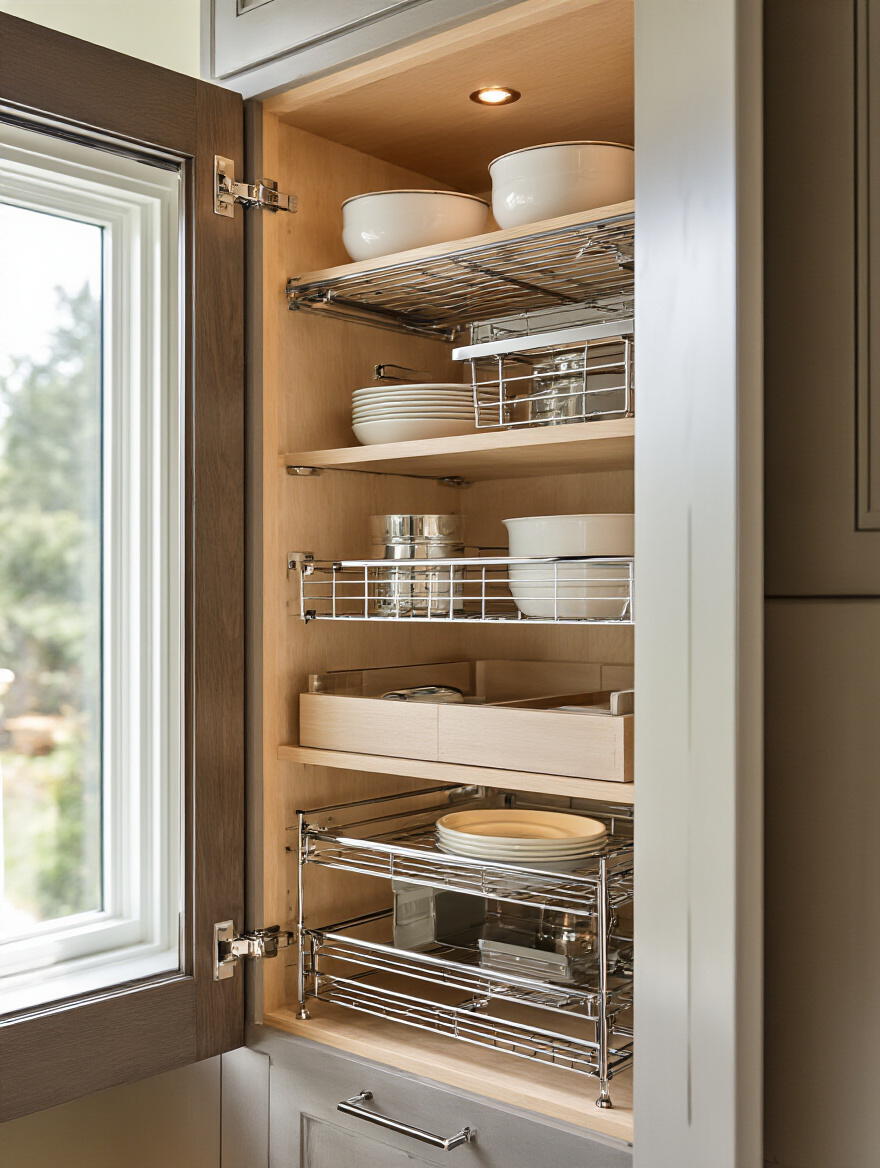
Maybe you need to add another pull-out shelf or swap a simple divider for a two-tiered one. Modular organizing systems are great because they can be reconfigured as your needs change. A quick annual refresh ensures your kitchen continues to support your lifestyle, rather than becoming a source of frustration and clutter.
Finally, a quick check-up can prevent a lot of aggravation.
22. Periodically Check Door Hinges and Drawer Glides for Smooth Operation
Once every few months, take five minutes and open every door and drawer. Do they close smoothly and silently? Are any doors starting to sag a little? Usually, all it takes is a few turns of a screwdriver to tighten a loose hinge or adjust the alignment. Your cabinet hinges have adjustment screws for a reason—use them!

This tiny bit of maintenance prevents the hardware from wearing out prematurely and ensures your cabinets continue to operate flawlessly. It keeps everything feeling new and high-quality. Nothing ruins the vibe of a sophisticated kitchen faster than a squeaky hinge or a crooked door.
Conclusion
See? Contemporary kitchen cabinets are so much more than just a pretty face. When you plan them thoughtfully, they become the foundation for a home that is easier, safer, and more joyful to live in. It’s about creating a space with clean lines that are easy to maintain, smart storage that reduces physical strain, and a seamless aesthetic that brings a sense of calm to the busiest room in the house.
This isn’t about chasing a trend. It’s about investing in good design that will last a lifetime, adapting and growing with you and your family. Your kitchen can and should be the beautiful, functional heart of your home. Now you have the blueprint to make it happen.
